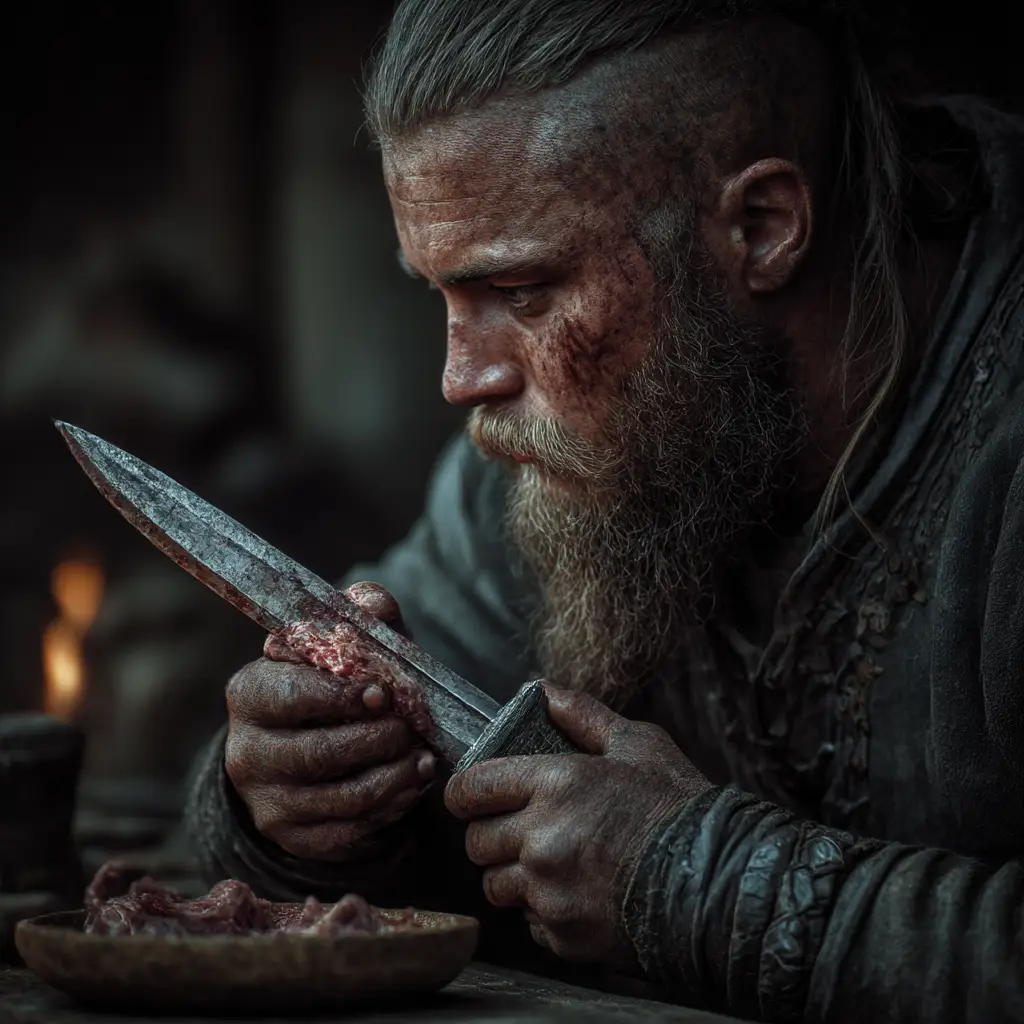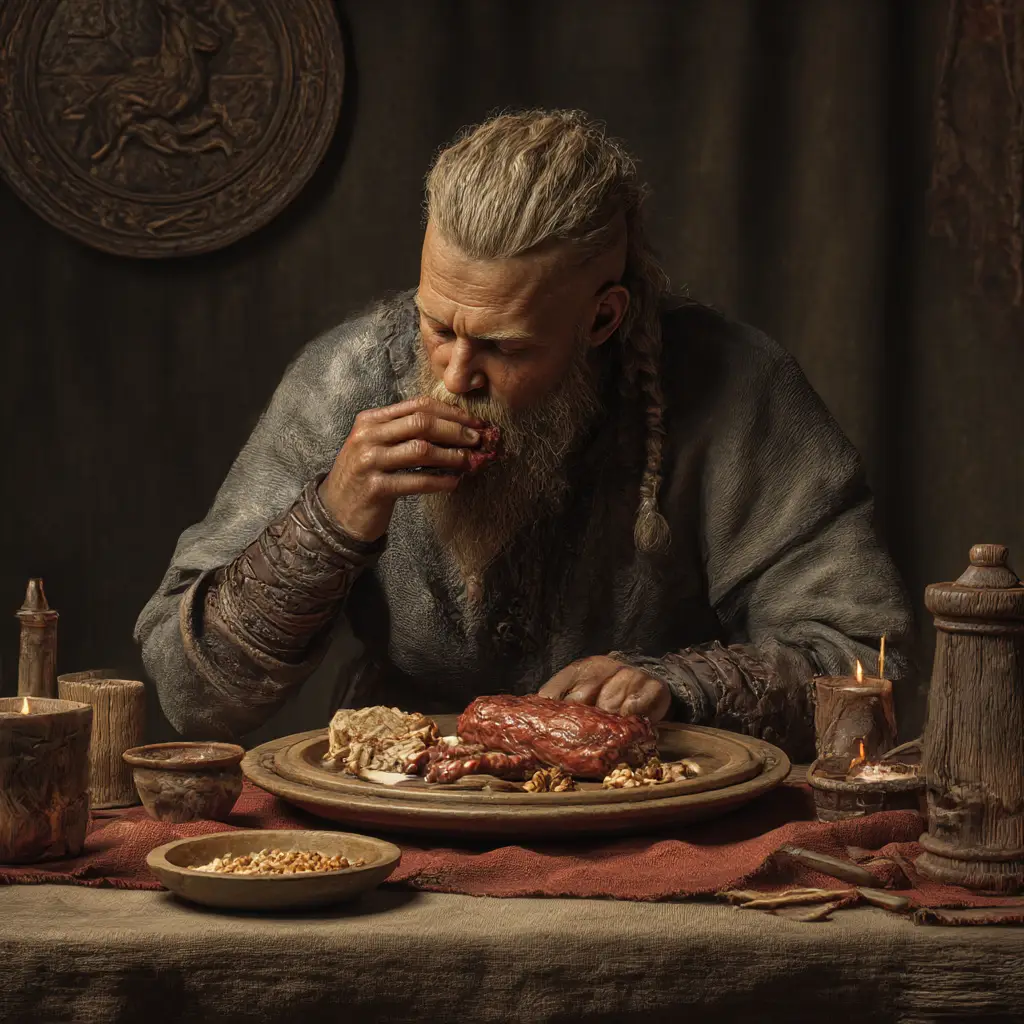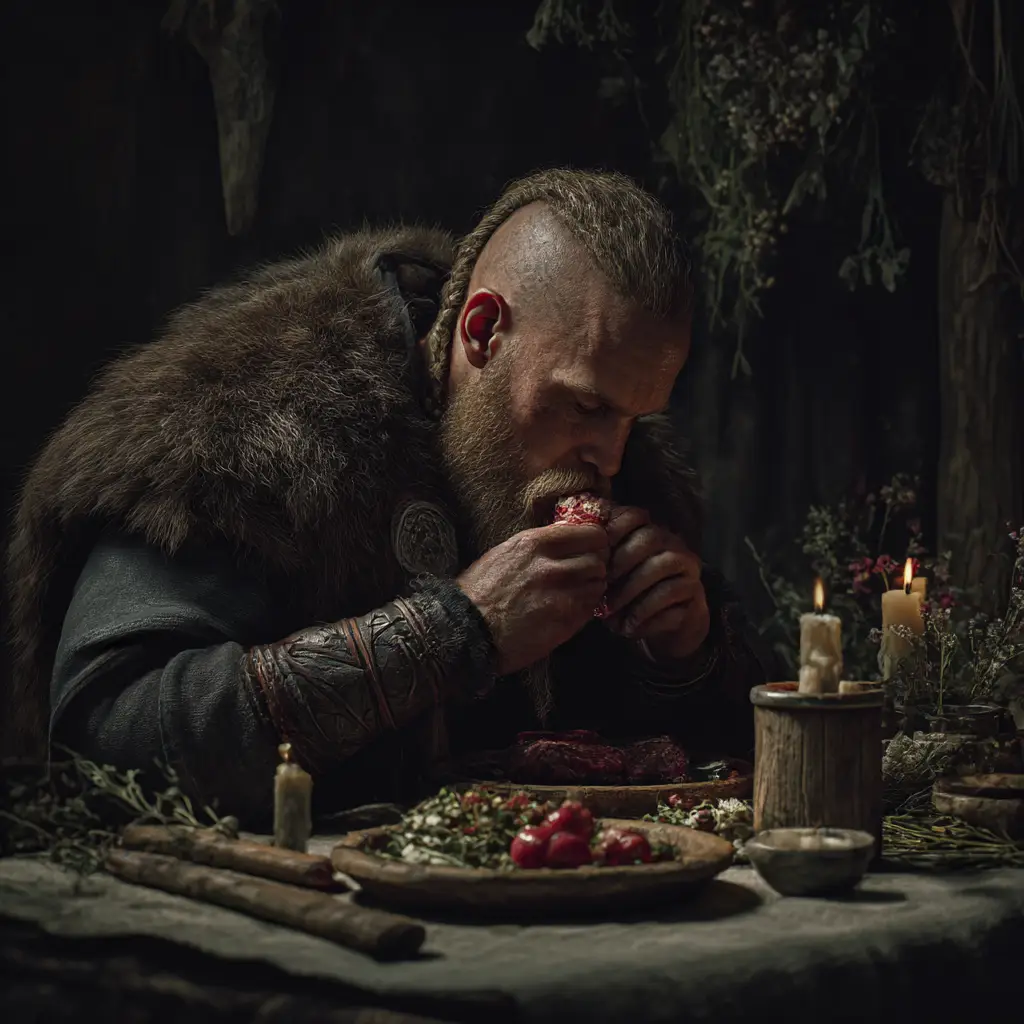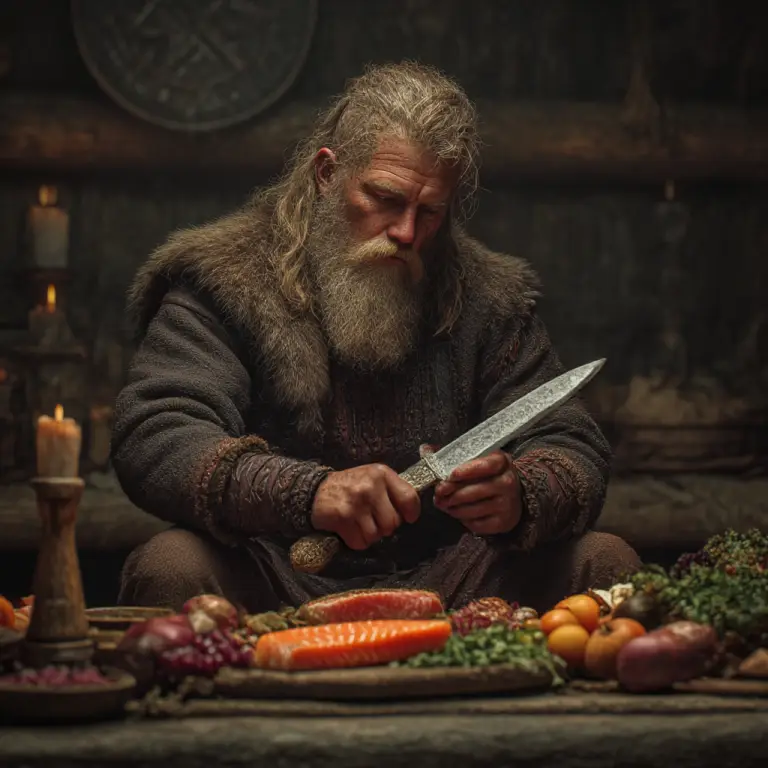Yes, the Vikings did use cutlery, although it was quite different from the modern utensils we use today. Their eating tools were practical, portable, and suited to both everyday meals and life on the move. Cutlery in the Viking Age reflected not only utility but also social status and craftsmanship.
Knives – The Primary Eating Tool
The most common eating utensil for a Viking was a knife. Everyone, regardless of age or gender, typically carried a personal knife known as a seax or a smaller eating knife. These were used for cutting meat, bread, cheese, and other food directly at the table or in the hand.
Knives varied in size and decoration depending on the user’s wealth and status. A simple iron blade with a wooden handle would be typical for most people, while wealthier individuals might have knives with carved bone or antler handles, and even inlaid metalwork.
Spoons – Less Common but Used
Spoons were used, particularly for eating soft foods like porridge or stews. Viking spoons were usually made of wood, but bone and antler examples have also been found in archaeological sites. Unlike modern spoons, they might have been less uniform in shape and size, crafted by hand for daily use.
Forks – Rare or Non-Existent
There is no strong evidence that Vikings used forks for eating in the way we do today. While two-pronged forks may have existed in some form for cooking or serving, they were not common table utensils. Vikings typically used their fingers, knives, or occasionally spoons to handle food.
Drinking Vessels and Tableware
Vikings also used a variety of vessels for drinking and eating. These included wooden bowls, trenchers (flat pieces of wood used like plates), and horn or wooden cups. Wealthier households may have had pottery, imported glassware, or intricately carved drinking horns for feasts and gatherings.
Cutlery as a Status Symbol
As with many aspects of Viking life, eating tools could reflect social standing. A finely decorated knife or a carved spoon could serve as a marker of identity and pride. These items were often carried on a person’s belt and might be used throughout the day, not just during meals.
While Viking cutlery was simpler and more limited than modern utensils, it was perfectly suited to their needs. The typical Viking would eat using a personal knife, sometimes a spoon, and very rarely anything like a fork. Meals were often communal and informal, with people using hands and shared dishes, showing a practical and social approach to dining that was deeply rooted in Norse culture.



